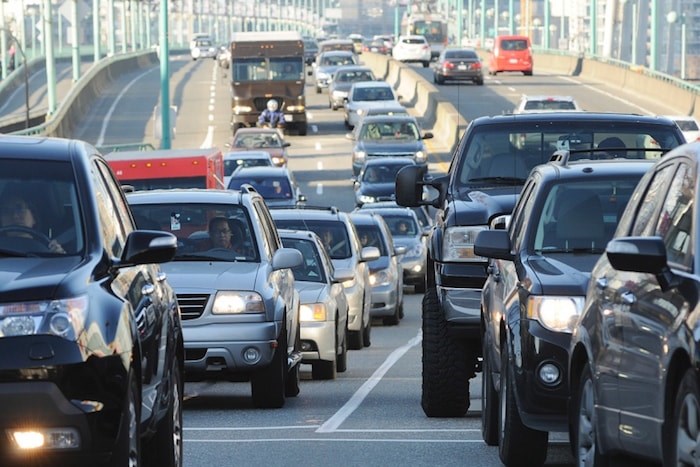When the COVID-19 pandemic hit British Columbia in 2020, many of the province’s streets went quiet.
Offices, restaurants and schools shut down. As many jumped on Zoom, the commute came to an abrupt end, and with it, the tailpipe emissions of hundreds of thousands of cars.
Two years later, the province has released data on what that has all meant for carbon emissions.
In the first year of the pandemic, carbon emissions dropped nearly five per cent from the previous year. While that represents a 3.3 megaton drop in greenhouse emissions, some are warning things could quickly turn around.
“There’s a really big risk people think we could be making progress,” said Jens Wieting, a senior forest and climate campaigner with Sierra Club BC.
In 2021, a CleanBC Climate Accountability Report estimated 2020 emissions would drop to between 63 and 67.6 megatonnes, largely due to changes in behaviour during the pandemic.
At 64.6 megatonnes in 2020, the latest figures — which are always released with a two-year lag — are on the lower end of that estimate.
That same report forecast emissions would level off in 2021, before starting a downward trajectory in line with the province’s climate targets.
B.C.’s 2025 emissions reduction targets require greenhouse gas output to drop to 54.4 megatonnes per year, a 16 per cent drop in emissions from 2007 levels.
“To achieve that, B.C. will need to reduce its emissions by about 2.37 megatonnes per year every year between 2019 and 2025,” wrote Andrew Gage, a staff lawyer with West Coast Environmental Law, in an email.
The pandemic reductions shows that’s possible, added Gage. At the same time, those reductions would have to be largely replicated every year between now and 2025.
B.C. lagging behind Canada
As a whole, Canada’s emissions dropped by 8.9 per cent in 2020, nearly double B.C.’s reductions.
“I was disappointed that we didn't have greater reductions,” said Merran Smith, founder and now chief innovation officer at the organization Clean Energy Canada.
Smith suspects part of B.C.’s relatively poor emissions reduction performance comes from an economy not hit as hard by shutdowns like in other parts of the country.
The pandemic anomaly aside, B.C. has yet to buck the trend of climbing emissions, said Tom-Pierre Frappé-Sénéclauze, program director for buildings at the Pembina Institute.
Frappé-Sénéclauze said most of the important policies that would bend the emissions curve have been announced in the CleanBC 2030 Roadmap, but very few of them have been put into practice.
“We haven’t released the big guns yet,” he said. “I wouldn’t be surprised if 2021 was trending flat or upward.”
Pulling apart the data, emissions from road transportation saw a significant drop of nearly 18 per cent. At the same time, emissions from homes, commercial and public buildings climbed along with the oil and gas sector.
But tackling those rising emissions doesn’t have to be painful, says Frappé-Sénéclauze.
“Most people might not even know if it's gas or electricity that heats their building,” he said.
“And if it was switched to a carbon-neutral source — heat pumps instead of natural gas — a lot of people might not even notice, but it will make a huge impact.”
He says many of the policies to make these things happen have been announced, they “just haven’t hit the ground yet.”
Frappé-Sénéclauze says three of the biggest regulatory holes include a cap on the oil and gas sector, a reduction of methane pollution and a cap on natural gas utilities.
“We don't need a full pandemic on an ongoing basis to meet our target,” he said.
“We need to put pressure on the government to make sure these regulations are in force.”



